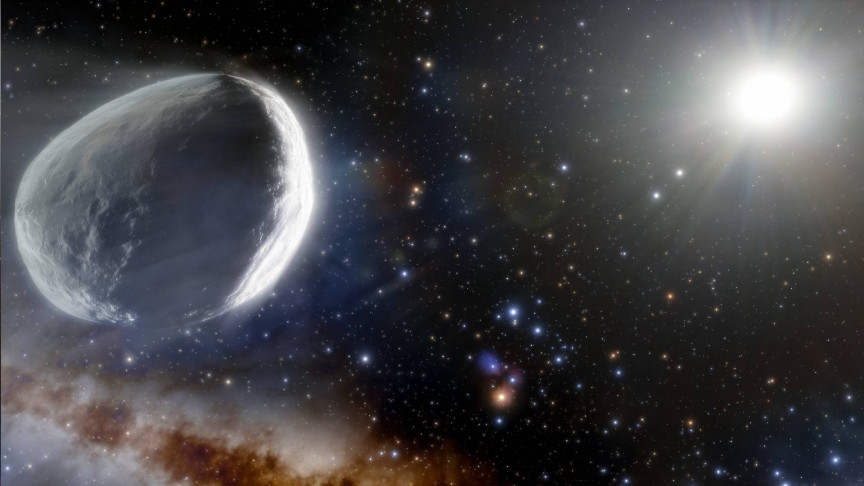
interestingengineering.com
Largest Comet in History Is Heading Toward Earth by 2031
Comet Bernardinelli-Bernstein is currently much closer to the sun than when it was first seen in 2014.
Science & Tech
There's a giant comet heading toward Earth and it is the biggest ever seen so far. The comet was discovered by Penn State astronomers Pedro Bernardinelli and Gary Bernstein and has now been named after them.
The astronomers speculate that the comet Bernardinelli-Bernstein is between 62 and 125 miles (100-200 km) long which would make it 1,000 times more massive than a typical comet. "With a reasonable degree of certainty, it’s the biggest comet that we’ve ever seen," Colin Snodgrass, an astronomer at the University of Edinburgh, told the New York Times.
Astronomers further speculate that it was ejected during the early history of planets into the Oort Cloud of icy small bodies that envelop the solar system. The comet, also named Comet C/2014 UN271, was spotted thanks to data from the Dark Energy Survey (DES) that uses a special telescope at Cerro Tololo Inter-American Observatory (CTIO) in Chile to snap images of distant space objects in the red part of the visible spectrum and in the near-infrared.
Comet Bernardinelli-Bernstein is currently much closer to the sun than when it was first seen by DES in 2014. Astronomers estimate that it will reach its closest point to the sun in 2031. Still, nothing is for certain.
“Comets’ behavior is very hard to predict. It’s even harder than predicting the 76ers’ playoff performance,” said in a statement Bernstein. “Despite the comet’s great size, it won’t get close enough to Earth to be visible to the naked eye.”
Those hoping to catch a glimpse of it will require a good amateur telescope, said the researcher.
“We have the privilege of having discovered perhaps the largest comet ever seen, or at least bigger than any well-studied one, and caught it early enough for people to watch it evolve as it approaches and warms up,” added Bernstein. “It has not visited the planets in more than 3 million years.”
DES’ goal is to map millions of galaxies across one-eighth of the entire sky.
























































